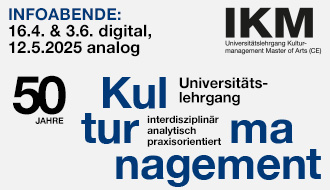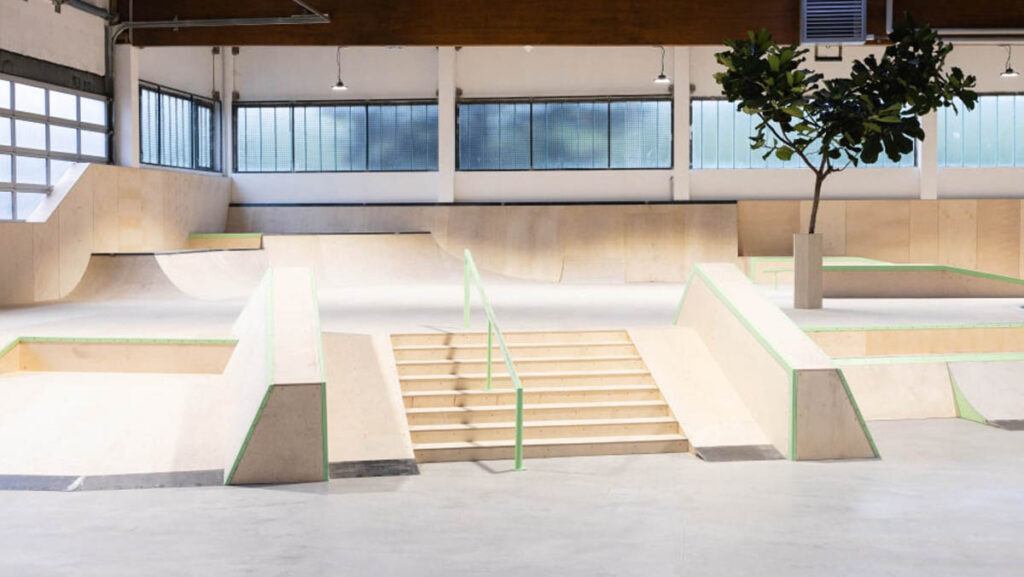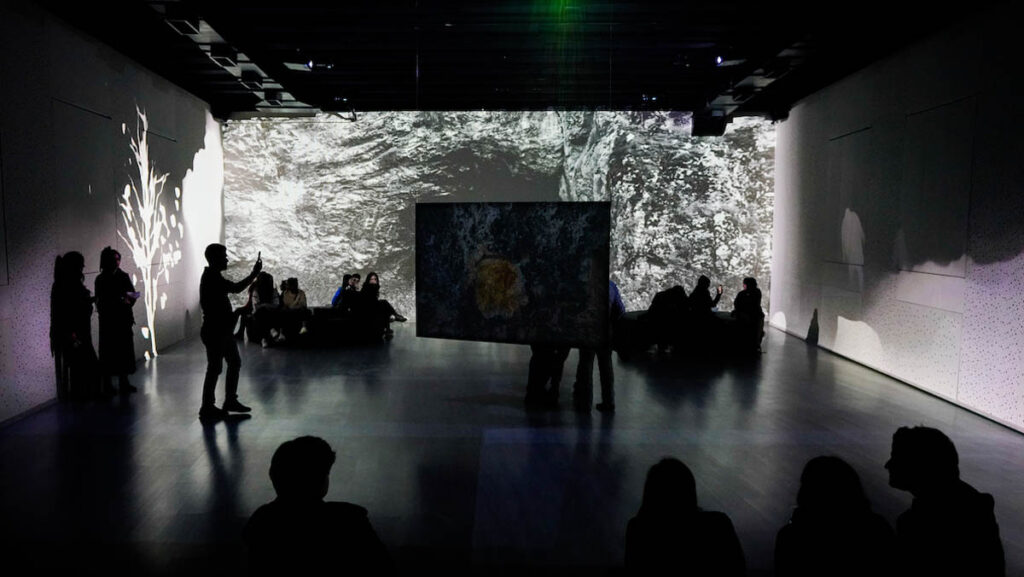
The artist studied sculpture and time-based media at the Academy of Fine Arts in Munich with Stephan Huber and Alexandra Bircken. He is based in Munich and is represented by Britta Rettberg Gallery. In this interview for Les Nouveaux Riches Magazine, we explore his recent exhibition as part of Various Others Munich 2024.
Erka Shalari: Dear Paul, first, congratulations on your duo show, Solid Currents; I really like how you and Lennart Lahuis have been collaborating to shape this exhibition. Can you give an intro to the ones that didn’t see the show?
Paul Valentin: I’ll start with my joy at being able to do a show like this with Lennart. Britta Rettberg brought two international galleries to Munich (Callirrhoë from Athens and Dürst Britt & Mayhew based in The Hague) as part of the Various Others invitation, which is about Munich’s global network, which gave me the chance to meet Lennart, who I had wanted as a partner for the exhibition and who, as everyone could see straight away, is an incredibly nice person and a virtuoso artist! It quickly became clear to us that the similarities between our themes and the diversity of our media could be combined in the concept of spolia – so our approach was an archaeological, poetic and anachronistic leap between the themes of time, measurement, change and emergence.
Lennart’s clay works show fragments of a scientific text about the continental drift of the British mainland away from Europe – created in the light of the Brexit referendum, he had them eroded and broken, to be rearranged by him years later into the poetic recombinations that are now on display in the exhibition.

These clay tablets, whose archaeological aesthetics and universal poetry address a time scale of centuries or millennia, confront the fog sculptures placed in front of them. In a fraction of a moment, the sentence „When is it that we feel change in the air“ appears as mist. It is a fascinating way of simultaneously creating and capturing the moment in which change is happening. And just as the clay fragments turn scientific into poetic, the poetic sentence of the fog work „Murmur“ almost becomes something empirical. Walking through the corridor, our works approach each other and culminate in a joint installation in the last room of the gallery.
Dürst Britt & Mayhew and Britta Rettberg met at Artissima, where Lennart’s work won a prize and one of his transport crates from back then is the base of my work Cinders of Sight I. The mural shows an optical illusion of a spolia wall in which fragments of another work of mine are reused. Even if the archaeological style, especially of the last room, refers to a common past, Lennart and I were also very interested in a special form of temporality: If you think of the fact that the pyramids were as old for Cleopatra as Cleopatra is for us – that, for example, in the future something is already so old that we don’t yet know who will build it and the people of the future have already forgotten it again – something emerges that falls completely out of time and becomes timeless in a certain way. I try to pick up on this mood in the places and artifacts in my films.
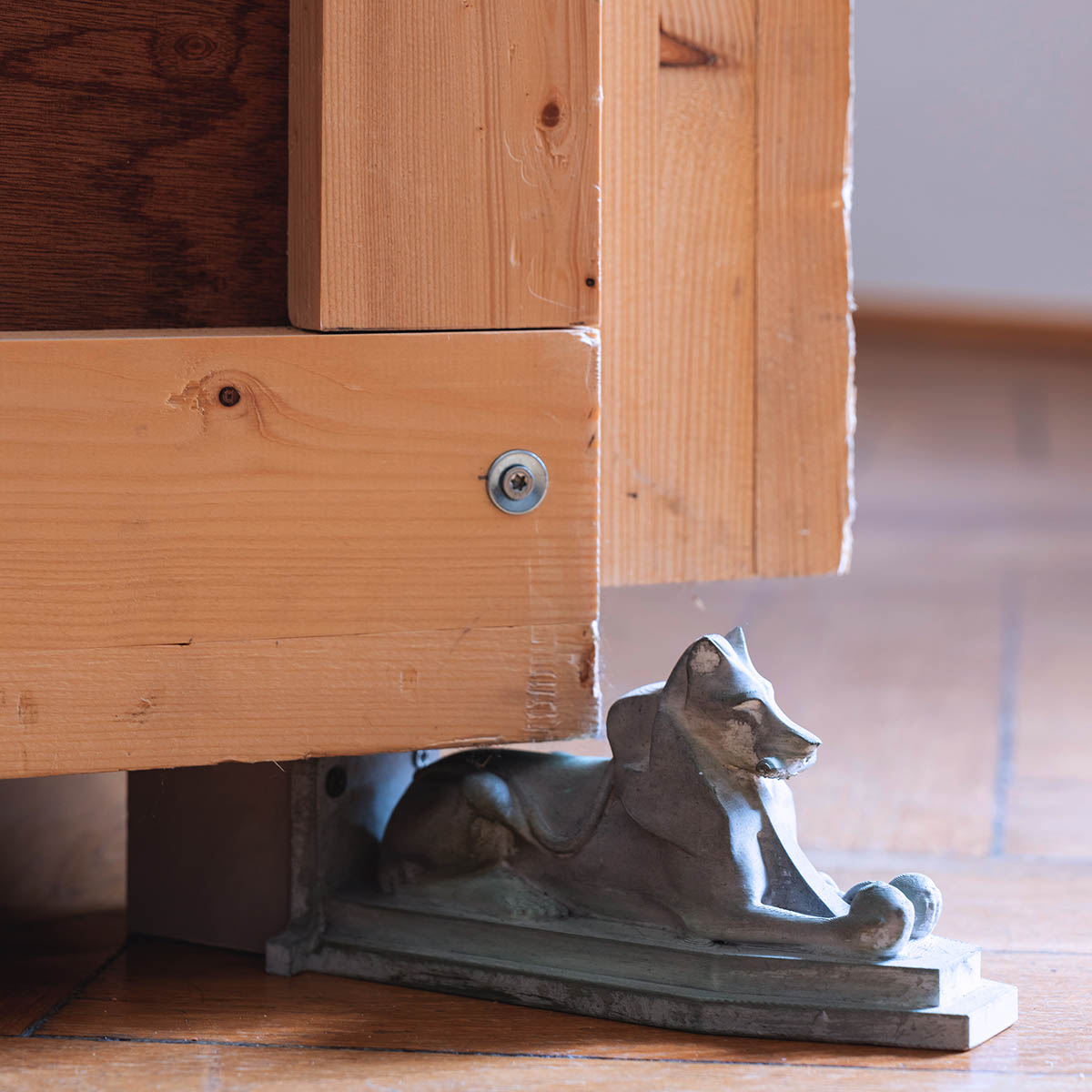
The gallery room facing Gabelbergstraße is the home to your video work, CODA. I would like to invite you to talk about how the work is built, the watery landscapes, the music, and perhaps the process behind how your titles take shape, particularly in this work.
Coda is the fourth part of a series I started last year. It is based on a science fiction anthology that I am writing at the same time. The first three films were part of a video and sound installation that were spatially separated (one video was shown in each room of the gallery) but synchronized in time and music. The music of the individual films mixed in the exhibition rooms to form a common soundtrack that changed depending on which video was in front of you. The theme of the first three parts, titled Tacit Call, was the Münchhausen Trilemma – this states (in a nutshell) that when you ask for the first reason for something, you always end up in one of three dead ends and therefore cannot answer it. What remained for me after dealing with the trilemma was the concept of emergence, and in particular the phenomenon of the wave.
Waves are emergent patterns that have properties that the parts they are made of usually do not have. Surprisingly, it doesn’t matter what kind of wave we are talking about, because regardless of whether it is a light, water, sound or object wave, they all have an astonishing similarity. All waves can be reflected, absorbed, refracted, diffracted and scattered or even interfere with each other. That sound waves behave like water waves when they meet can be seen when the sound of the ambulance gets higher as it approaches and then lower as it moves away, it’s why noise-canceling headphones can cancel out street noise and why we hear music being played in another room. So I wanted to make another movie dedicated exclusively to the phenomenon of the wave.

The three characters from Coda were already my protagonists in Tacit Call. There, they were spatially separated and each got a video to themselves, in Coda they gather in the same place and their waves overlap. The characters are androids. I wanted creatures that, in the history of film, are subject to the question of whether they have a consciousness or not. Their heads are reminiscent of so-called bi-neural microphones that are used to record sounds as they sound to our ears. The hands look like they are made of ballistic plastic or wax. They wear tiny cameras like moles on their faces and their glittering suits react to the light that falls on them – basically they are sensory machines. Their general appearance is based on costumes of Vaslav Nijinsky (especially in L’Après-midi d’un faune).
While, the title Coda was, as so often, a provisional working title that I had chosen without knowing what it meant. When I then found out that it is not only a musical term that characterizes a final musical movement, but also, in seismology, describes an earthquake wave that conceals other smaller waves within it, I was very surprised. But that happens to me all the time. I like to treat titles as something quite intuitive. It gives me the feeling of giving subconscious processes the necessary scope. Tacit call translates for me today as „intuition“ – a silent offer that you follow by mutual agreement and that guides you – which is exactly what the work is about.
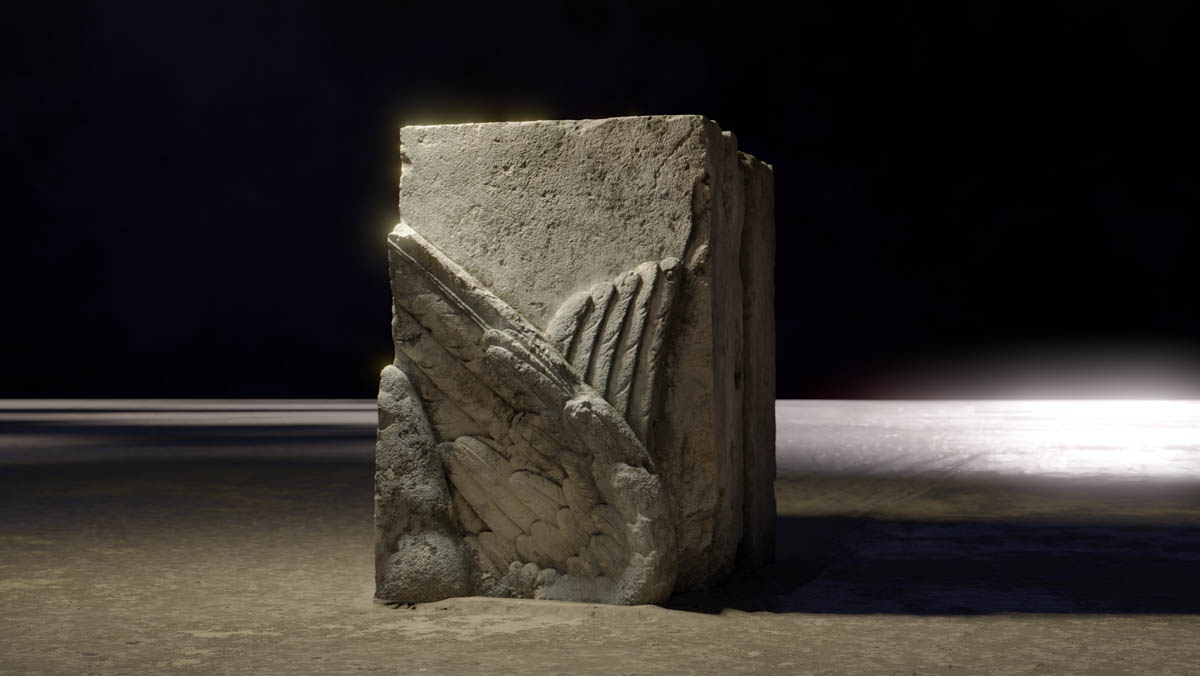
I find it fascinating that characters from your earlier works reappear in new ones. In Tacit Call, for instance, the three characters—ILZ, INN, and Danube—bear the names of rivers. Each engages with a form of decoding, suggesting that this process holds significant meaning for them and you. Could you expand on the role decoding plays in your work?
As in psychoanalysis, in art we often translate something abstract like a picture into something abstract like a feeling. This is an extremely delicate process whose state of limbo must first be endured. But if one can summon the confidence to tolerate this perseverance in the uncertainty and the mystery, it can be very exciting and, I believe, lead to a completely new form of decoding. In Tacit Call there is ILZ, who analyzes the dreamlike video file, and Danube, who is at the locations in the film – since everything happens simultaneously, it is not clear whether he creates the file because he is there, or whether he is there because the file exists. On an even more abstract level, INN’s dance in the third video sometimes seems to anticipate Danube’s movements and influence scenes from the file. I imagined three gears all interlocking and yet not blocking each other but turning paradoxically, how would one ever be able to tell which one is the source of the impulse?
And what is the role of music?
Somehow it always begins or ends with music. It is the most enigmatic art form for me. Sometimes I wonder if art becomes more radical the more it becomes like music? For the scores of my films, I have often worked with one of my oldest friends, the musicologist Jan Kuswari. We made films together when we were teenagers. In „A Piano Plays in Another Room And It’s Raining“ (2022), he developed a piano algorithm that plays an infinite piano piece that keeps reassembling itself. For Tacit Call, a score consisting of three parts that react to each other but are played simultaneously, like a three-part choir. For Coda, a melody was created that slowly builds up from individual notes that are always repeated, like a complex pattern created by waves. The music always reflects the theme of the work, taking it to another level. So it was possible to hear a characteristic part of the soundtrack in Tacit Call while being in another room in front of another part of the work and remembering what was happening at the same time in the other room.
In a way, you were watching several movies at the same time – one in front of you and the others in your mind. For the three android characters, I worked together with Alexander Degner, who is a brilliant character designer at Meta. It’s very rare that I do collaborations because I actually discovered 3D animation as a medium for myself because it gives me the opportunity to make a whole movie on my own, from the script to the camera, the lighting and set design to the movement of the protagonists. I love immersing myself in every aspect of it, but I couldn’t do any of it if I didn’t have the help of others in the first place. During art school, I learned 3D animation through YouTube from honourable people who produce thousands of hours of learning content, more or less for free. That was such a great gift for me – what a time to be alive.
In your artistic portfolio, you describe yourself as an anti-Platonic thinker, a believer, and someone in search of truth within fiction, influenced by surrealism and experimental film.
To this day, I would not be ashamed to say that the movie The Matrix (1999) influenced me a lot. Baudrillard and Plato in one action SciFi – What! At the time I didn’t know what it was called, but I would have been a Platonist. The separation of the sensual world and the world of ideas, of body and soul, of truth and fiction, just like in The Matrix. Red Pill or Blue Pill? Dualist through and through. Later came Slavoj Zizek, who suddenly wanted a „third pill“?
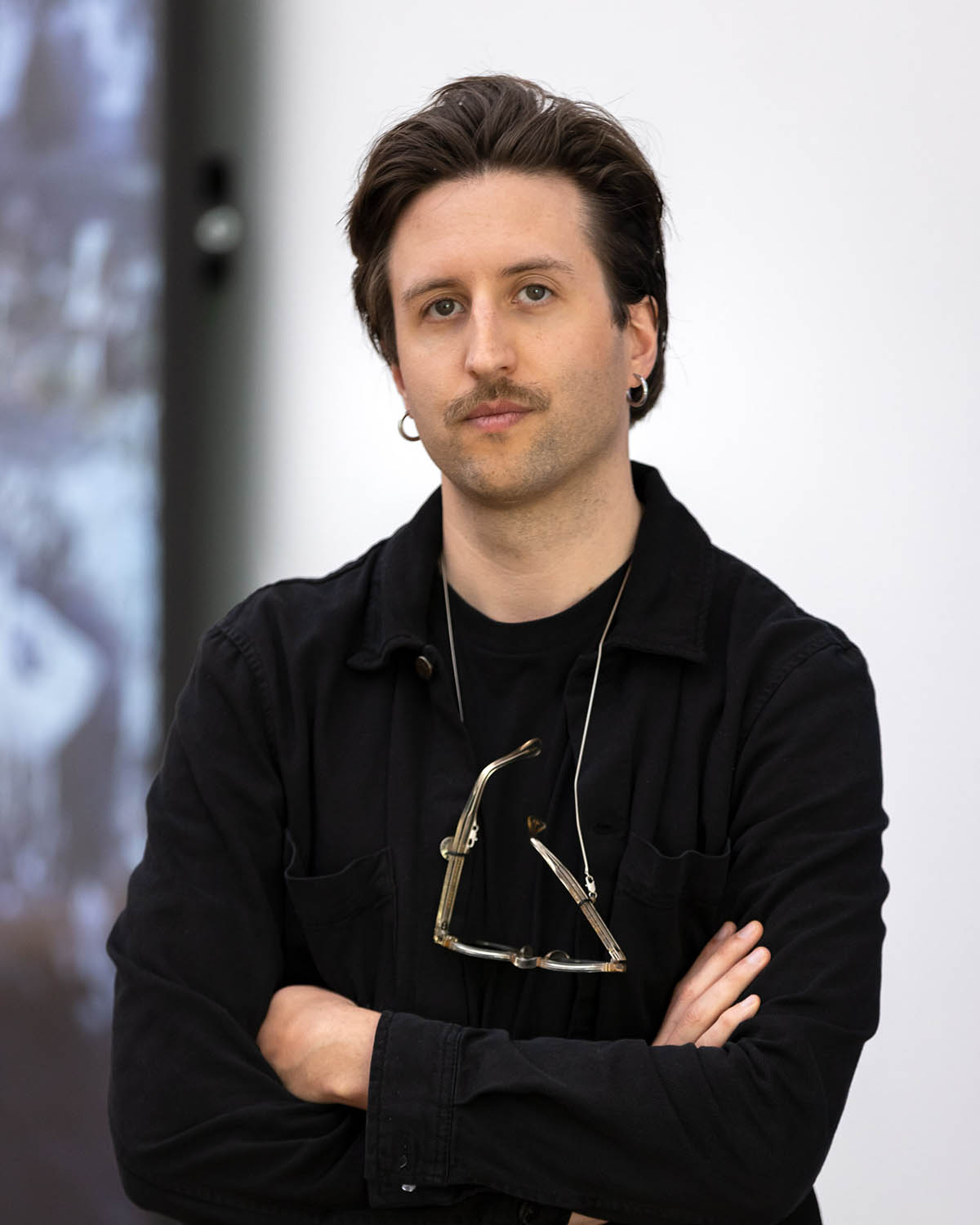
So it’s not enough to simply wake up from an avoidable lie and then find yourself in the truth. Because every world is riddled with fictions. We carry them with us. And every fiction, like a play by Brecht, is interspersed with truth. A truth that we didn’t even notice „out there“ in the „real world“, we suddenly recognize in a dream. That’s how easy you become a surrealist! Dualism slowly turns into something like Daoism. Contrasting ideas in particular are dependent on each other and already have this small point of contradiction within them (Yin Yang). From then on, my work was mostly about paradoxes, as I imagined that they are something like predetermined breaking points of logic where I can best explore how this „truth“ is working.
How long do you take for your creations?
Normally, an answer to a philosophical question immediately leads me to the next question and thus to the next work. This usually keeps me busy for a whole year or even longer, resulting in one or two videos per year on these topics and usually a whole host of additional works, paintings, objects and texts.
We talked a lot about recent times, yet I would also be curious how art came into your life. How did you decide to study at the academy?
Although my father had also studied art, it wasn’t on my radar when I was younger. I always wanted to make films though, but I couldn’t come to terms with the fact that I had to decide which courses I wanted to take, because I liked doing everything so much (Script, Camera, Light, set-design ect.) When I was 19, I stumbled into an underground exhibition of young academy graduates and saw Tobias Zintel’s video work ACID & ICECREAM there. A mysterious three-channel installation – there was no trace of understanding but I was fascinated by the mystery and then I saw that this was made by a single person, and here in the exhibition people came and watched this film, a dream! That’s when I knew I had to go to this academy! Stephan Huber was my professor there before Alexandra Bircken took over the class in 2018. Both were great professors. I wanted to go to Hubers class because he understood Hollywood, he knew how metaphors and strong images function and was into strong statements. I also liked his approach to art as a „serious game“ in which, after giving yourself a leap of faith, you test your hypotheses for consistency. This modern kind of surrealist paranoiac-critical method was common in the working methods of his students – Sophia Mainka, Judith Neunhäuserer and Lilian Robl, with whom I studied at the time, still play this serious game very deliberately today, and, in my opinion, achieve even scientific standards with it.
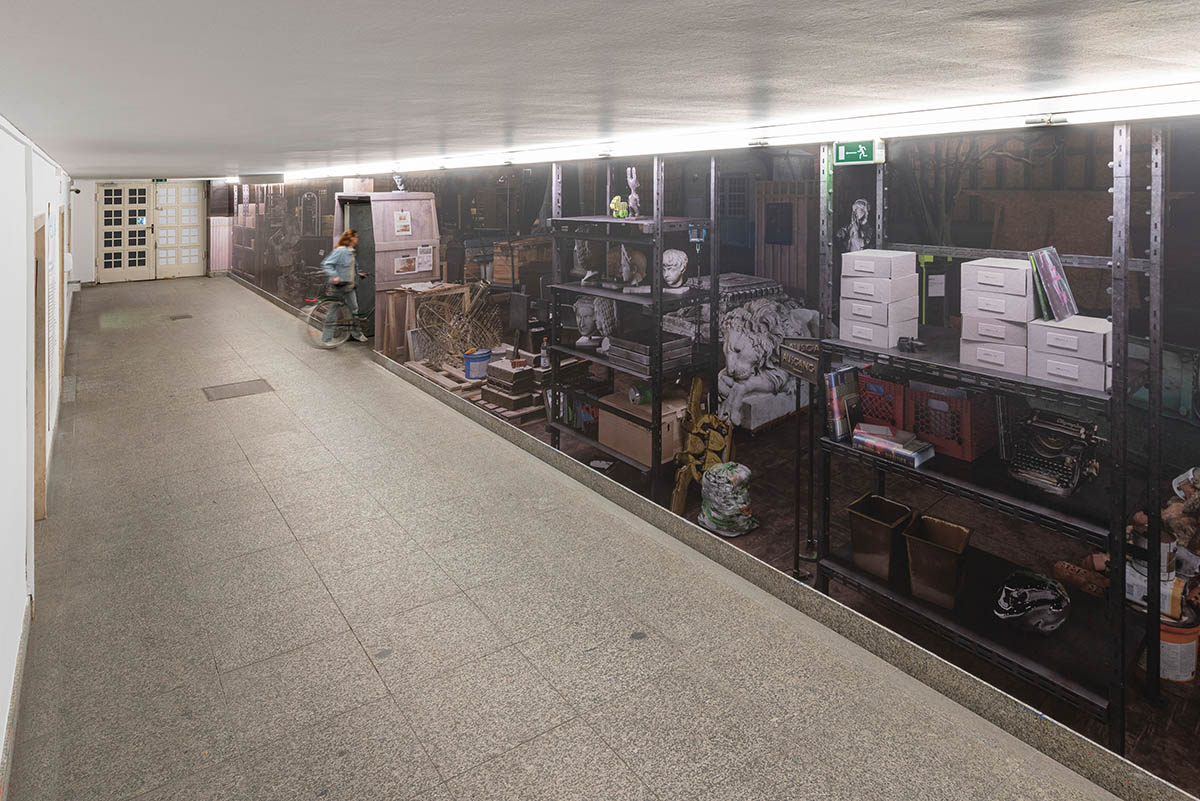
For a final question, I would like to ask about the incorporation of monumental facades, fictional architectures, and realities that you do. I would like to invite you to elucidate on it.
I like to incorporate these fake reliefs into exhibitions to make visitors think about deception. They are 2-dimensional billboards that I design to create the illusion of a three-dimensional wall through the incidence of light and shadow on site. In this case it shows my interpretation of the Pandora myth, which is related to the theme of „nothingness“ in the video work in the background. Because when Pandora released all horrors into the world by opening her box, according to the myth one thing remained in the box – hope. I then wondered what we mean when we say ‚don’t open Pandora’s box‘ (a second time? because it has already been opened – disease and death are already in the world) – do we mean don’t release hope because otherwise all that remains in the box is – nothingness…?
Further, I always liked the punchline that the Pyramids of Giza were as old to Cleopatra then as Cleopatra is to us today. She may have stood in front of the 2000-year-old ruins of these buildings back then, just as we stand in front of her famous bust today and feel a similar mystery. It inspired me to create a fictional world for my latest films, in which the buildings and places are so old that the inhabitants of this assumed futuristic time no longer know who built them, and we (the viewers) don’t know it yet, so that the monuments are falling out of time entirely. The philosophical problems that I like to devote myself to are also known as transitory questions, because they are usually carried on into every epoch of philosophy, reinterpreted and answered anew. That’s why I particularly enjoy building these kinds of stage sets, which feel as if they are universal and enduring, just like the questions I`m trying to solve.

Paul Valentin – www.paulvalentin.de
VARIOUS OTHERS is the “international format” of the Munich art scene. Its key players―galleries, artist-run spaces and various other institutions—welcome one to discover the rich diversity of the city’s art venues. In collaboration with changing international partners, VARIOUS OTHERS offers art lovers from all over the world contemporary art of the highest quality and relevance in the unique surroundings of the Bavarian capital. Twice a year, VARIOUS OTHERS heralds the art seasons in Munich, and it has become a regular fixture in the international art calendar. VARIOUS OTHERS is organized by the non profit association VFAMK e.V. The „Verein zur Förderung der Außenwahrnehmung Münchens als Kunststandort“.
Note: Solid Currents, featuring works by Lennart Lahuis and Paul Valentin, was showcased at Britta Rettberg Gallery in Munich from September 7 to October 19, 2024.



